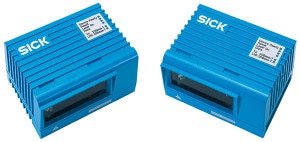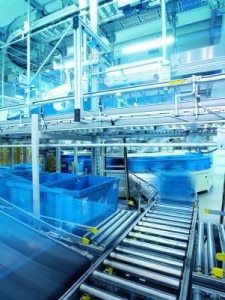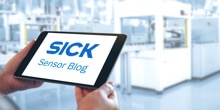Supply chains and logistics processes form a key component of the value added chains of many industry sectors and fields. Just as it does for economic development, the logistics sector also plays a key strategic role in reducing the level of CO² emissions. Many initiatives have already been launched, although solutions with low CO² emissions and alternative transport options are not yet available on a wider scale. In this respect, intelligent sensor solutions can make a significant contribution.
Protecting the environment can be worth it. Various initiatives by large logistics companies are already demonstrating that the efforts involved in reducing CO² emissions are also having an impact on improving cost structure. An important starting point for these efforts is for processes and sequences to be controlled with the greatest precision in both intralogistics and interlogistics. In this regard, intelligent sensors are capable of providing the necessary information accurately and reliably. But this alone is not enough. The flood of data collected must also be capable of being controlled, analyzed in a meaningful way, and evaluated in order to make informed decisions.
Optimizing transport volumes
Today, more than 5.5 percent of the world's greenhouse gas emissions are caused by logistics alone. In the fields of both transportation and intralogistics, there is significant potential to reduce the level of CO² emissions. As a result, greenhouse gas emissions can, for example, be reduced by an increase in transport efficiency or a reduction in transport volume.
 Volume measurement VMS520
Volume measurement VMS520
Volume measurement systems from SICK can quickly and accurately measure parcels of any size and in any location, whether they're on the conveying system or - in the case of large objects - directly on the pallet. Combined volume measurement and identification systems make it possible to achieve optimum utilization of load bay space. In logistics environments, these systems are used to calculate transport capacities and optimize vehicle loading. In this way, loading capacity increases and further improvements can be made to route planning. Concepts such as these not only save on transport costs, but also lead to reductions in CO² emissions. What's more, the fully automatic volume measurement data provides the criteria that are essential when it comes to making potential process improvements. Once collected, the data has an influence on statistics, for example, which form the basis for optimizing internal flows of goods. For one of the largest logistics service providers in Germany, SICK has developed a globally unique combined volume measurement and identification system that can be used to achieve optimum utilization of load bay space. The company has set itself a target to cut its CO² emissions by more than half by 2020 through the use of this technology alongside additional measures.
Lower energy consumption - even on a small scale
SICK's Zone Control® solutions make a real contribution to producing more efficient materials handling processes in intralogistics environments. Just as traffic lights regulate the flow of traffic in towns and cities, these solutions control the flow of products on a belt - without the need for a PLC or another type of external control. For Zone Control® sensors with integrated sleep function, the motorized roller is automatically switched to standby mode if an object is not detected within a set period of time. Furthermore, the new R/IR sensors reduce consumption by 3 percent, placing them right at the forefront of the market. When it comes to logistics, storage and cargo space are valuable resources. Integrated monitoring solutions offer scope to adapt ongoing processes and even free up space in real time - not only in the warehouse, but also in cargo bays. Sensors are on hand to provide the necessary data, although the data alone is not yet enough.
Making the right decisions by controlling the flood of data

Intelligent sensors record and communicate data, but there's no real added value involved until this data can be used to make decisions on ways to improve processes. Big data has become a real issue for companies, particularly in logistics environments where plants are tasked with processing millions of packages each day. On the one hand, this data offers great opportunities; on the other hand, however, the process of preparing it in a way that allows companies to make the right decisions presents a significant challenge. This is why we created the Package Analytics software, which calls upon our extensive practical experience with automatic identification resources to provide a solution for these data recording and analysis requirements. This software allows you to retrieve and analyze information on system performance as well as the statuses of all recorded data with ease - from an individual package on the conveyor belt to an overview of the millions transported each day. This provides operators with direct access to the key variables for the materials flow, allowing them to understand and control these variables in a more appropriate way. The dynamic database solution simplifies the processes of monitoring, analyzing, and creating reports, images or videos of the packages. It can also be prefiltered and analyzed with ease in line with predefined selection criteria.
- Product information: Zone Control, Package Analytics
- Product portfolio: Zone Control, Package Analytics, Volume Measurement, Identification solutions
- All Articles: Green Efficiency, Package Analytics, ZoneControl


